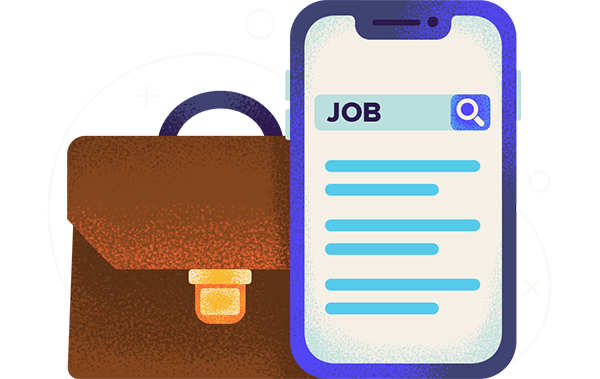No matter the climate of the current job market, most people do not enjoy the job search process. Understandably so; it can be a daunting process. That is why having a good coach, counselor or even a good friend can help tremendously.
There’s no shortage of job search information out there, but just like anything else, you will need to be a savvy shopper in deciphering what works for you. The one thing that every job seeker needs to have, regardless of age, is a job search strategy. I’m a strong believer of the old adage “Luck is when preparation meets opportunity.” Preparation is the key when it comes to the job search. A good book that outlines this theory is Luck is No Accident by John Krumboltz and Al Levin.
Self-Assessment
The first step of any job search is self-assessment to determine your strengths and weaknesses as they pertain to your career. My favorite assessment tool is the Myers Briggs Type Indicator (MBTI). Here is a free version you can take online: https://www.keirsey.com/sorter/register.aspx. Once you obtain your 4 letter MBTI code, my favorite site for delving into personality type is https://www.personalitypage.com/high-level.html. This site has an entire career section for each of the 16 types. My favorite book pertaining to MBTI and career is The Millionaire Code by Paul Farrell, JD/PhD. There is a chapter on each of the 16 types and how to align your career with your Type.
Resume/Social Media Prep
Your next step is to make sure you convey your strengths powerfully on your resume. You need to focus on accomplishments; quantifying and qualifying every bullet on your resume. (Quantifying includes numbers, dollar amounts, percentages, number of people, etc.; Qualifying includes descriptors, programs you used, tasks involved, product lines, etc.). There are many resume templates out there, but I have created one that has worked for over 1200 clients.
My version starts with a concise objective, then a summary section that details specialties, and if applicable technologies and languages as well. The education section comes next if you have a bachelors degree or higher, and you can consolidate this section with licenses if you hold any. Once you get to your employment history, instead of using “Work Experience” try using a functional heading such as “Project Management Experience” or whatever lends itself to your experience and the job you are targeting. At the end, if applicable, you can have a section entitled “Additional Qualifications” and list any community service, memberships, publications, etc. You will also need a well-crafted and powerful cover letter that connects how your experience ties directly to the job description. This will show the employer not only how qualified you are for the position, but can highlight your business correspondence skills at the same time.
Once your resume is crafted, make sure your online presence follows suit. LinkedIn is the best site for career development at any stage of your career. Every Fortune 500 company is represented and recruiters use this site more than ever before. Not only will you showcase your skills and employment history, but LinkedIn also is very useful in the next step of your job search, which is a combination of job market research and networking. If you find a job advertised via LinkedIn, it will show you how you are connected to that job, so you can reach out to people accordingly.
Networking
To start researching the job market, go to all the job search sites and read through 100s of job postings to learn more about what different jobs entail and which ones suit you best. When you find jobs that interest you, go to the company website to read more about the values, mission and culture of the company. Search the company on LinkedIn and see if you might be connected by 1st, 2nd or 3rd degree to anyone who may work there. You can then reach out with a no-pressure message to inquire as to how his/her experience has been at their company as a means to learn more about the culture. Most people will reply if you have a well written and professional profile that includes a photo. It’s a number game, though, so don’t get discouraged if you don’t hear back. Keep positive and keep at it.
Many people feel uncomfortable about networking. But you have already started networking if you have reached out to people on LinkedIn. Networking is about building more relationships, and you can start by networking with all the people you already know. Practice your elevator pitch on your friends. It will include your educational background, professional background, job objective, and relevant accomplishments.
There are many resources on line to help you create this. Your elevator pitch will change based on the audience. You will have many versions, but if you write down your most detailed version, you will be able to pull out what you need (off the top of your head) appropriate to any given situation. Finally, make sure everyone you know knows what you are looking to do with your career and ask people about their career paths. You may not know all your friends and family’s particular paths. Having more career-related conversations with everyone in your life will start making it feel more natural to branch out to seek other people’s career-stories to spark ideas for you. Start a system to keep track of all your networking efforts in an Excel spreadsheet (event, person, date, topics covered, next follow-up).
Interview Prep
Your final preparatory task is interview preparation, well before you get an interview, to make sure you are ready when you get called for an interview. The first step of this involves writing. Using your resume as your prompt, develop three to five accomplishment stories describing each situation, tasks, actions and result. Next, read through lists of interview questions that you can find on-line and write out as many answers as possible. Having given some thought to 100s of questions will ensure you are never thrown off in an interview.
Most interviews begin with “tell me about yourself” so, write out your elevator pitch to focus on the opening. Compare the job description to your accomplishments on your resume, analyze the job qualifications in the posting and highlight the ones that correspond with your experience. You need to relate your skills to the employer’s needs to convince them to hire you. Rehearse all your answers out loud until you have each one polished. Consider video recording yourself answering questions and ask friends if you can practice on them.
Final Thoughts
The job search can actually be fun if you employ diligent effort coupled with the right attitude. With the proactive approach to the job search, you will open doors and discover things about the job market, companies, people and even about yourself that you may not have known otherwise. Working diligently on the process will give you the confidence that you are doing all you can to create the career of your dreams that aligns with your skills and innermost values.
You will, of course, encounter disappointment along the way, as in not hearing back from employers, and perhaps not landing the job after an interview. But keeping a positive attitude is the key to an effective search over time. So try not to take any of it personally, realizing there are 100 reasons for any one disappointment, and most of the time it will have had nothing to do with you.
Be assured that if you don’t land a particular job, no matter how invested you are in it, there is a better one for you still to be uncovered. I promise you that all of your preparation and hard work on the job search will pay off in the end.


WalletHub experts are widely quoted. Contact our media team to schedule an interview.